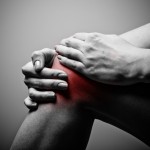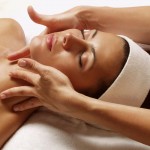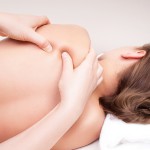The general conception among most people when they think of visiting a spa treatment centre is going for a facial or lying atop a massage table. The fact is that there is much more than just these two forms of treatment, with an amazing array of exotic treatments that thoroughly revitalise and rejuvenate the human body and mind.
The sheer variety of treatments which you can experience on a visit to the spa will leave you in a dilemma as to which to opt for and which to skip. These varying types of spa treatments offer a holistic experience and treat the entire body and mind while focusing on key aspects like overall health, nutrition, weight and beauty among others. For those who are first timers or not too well informed about the services available at a spa facility, acquainting themselves with the kind of benefits on offer is always recommended.
Without a doubt the most popular of these treatments is the well known facial. This focuses on revitalising and cleansing the facial area to make it look fresh and much younger. When you opt for a facial it includes numerous features among which are cleansing, moisturising and of course toning. It helps to remove dead skin cells from the surface of the face and could focus on specific areas that include the neck, forehead and under the eyes. Facial professionals also use collagen lotions to make the skin suppler and younger in texture. The costs differ substantially between treatments. For e.g. a hands and feet treatments price will vary from waxing and finishing touches spa prices.
Besides facials, some of the other body treatments include body wraps, exfoliation treatments, massages, sauna showers and the list goes on. Each serves a particular purpose and targets a specific area of the body. Another increasingly popular form of spa treatments is that of body wraps.
When you opt for a body wrap the first thing that is done is to exfoliate the skin using a salt scrub that helps to remove dead skin cells from the surface. This is followed by the application of a seaweed wrap, which helps to extract any toxins that might still be present in the skin. This dramatically improves the texture and appearance of the skin. After the wrap is removed the client has to go in for a shower to further remove any impurities that might be on the surface of the skin. After that a moisturiser is then applied to the skin to help it retain its softness.
Then of course there are the famous nails and hair treatments that women just love to go in for. There is threading of the eyebrows which is a method that owes its origins in the Middle East and is very popular with ladies.
Beside regular spa treatments available there are specialised skin treatments also increasingly being offered by top spas in London. They include laser hair removal, Botox treatments and microderma-abrasion among a range of others. The popularity of Botox injections has greatly increased thanks to celebrities like movie stars and other well known public figures increasingly opting for this form of treatment. They help to remove wrinkles and crow’s feet from the skin’s surface and make the skin look younger and firmer.
Microderma-abrasion is a process where the skin is treated with a very fine spray of micro- crystals and it helps to remove dead skin cells from the outer surface. The process of laser hair removal is a method used to remove unwanted hair permanently from different areas of the body. You need to attend several sessions for the effect to be permanent. Another variation increasing in popularity is pulsed-light hair removal that utilises short bursts of light at a diminished intensity. It definitely is less painful but again needs more sessions. Some of the other popular forms of massage treatment in London are……
Massage: This may include the classic Swedish Massage, Deep Tissue and a variation of other massages. To improve its efficacy a variety of exotic oils are used in proportion. Sometimes aromatherapy is also included in the package at top quality spas. All of the best spas in London offer their “signature” massages to clients.
Hot Stone Therapy: Then there is the use of hot stones for therapeutic effects. This is used in a variety of massage treatments and is combined at times with acupressure for a holistic experience of spa treatment. .
Acupuncture/Acupressure: A popular form of treatment that owes its origins to the Orient specifically China, it is well known to treat aches, pains and other maladies besides improving the circulation of blood and revitalising the skin
Colonics: Although not really the most pleasant or glamorous form of spa treatment it is known for its effectiveness in cleansing the body thoroughly from within. It cleanses the body of all toxins and impurities which induce a sense of well-being and make one feel and look much better.
Ayurveda: One of the oldest forms of holistic philosophy it originated about 5,000 years ago in India. Ayurveda makes use of natural remedies and herbs as is known to be both a form of spa as well as medical treatment.
Aromatherapy: This form of spa treatment involves the use of natural oils and essences in a therapeutic manner. They are used in variety of treatments which range from body wraps, diffusions, massages etc.
Paraffin: It is known to be one of the most effective methods of softening and hydrating the skin using soft, liquid wax, which may or may not include the addition of natural oils. Paraffin is known to be excellent in retaining moisture and is used mainly in manicures and pedicures to heal any cracks or rough skin and moisturise it thoroughly.
Reiki: A well known Japanese form of treatment it is used primarily to relieve stress, aches and pain and heal the body from within. It is based on ‘qi’ or energy and helps to maintain a balance of natural energy within the body, while rejuvenating and revitalising the entire system from within.












